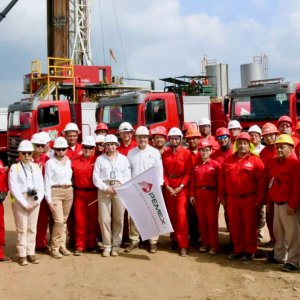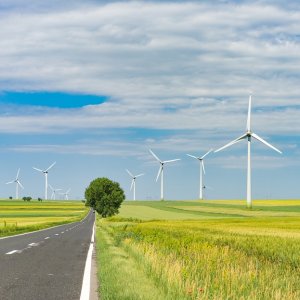Collaborative Clean Energy Innovation for Economic Recovery

STORY INLINE POST
If we were to define 2020 with a single word, most probably it would be “pandemic.” In fact, a couple of weeks ago, Merriam-Webster announced pandemic as its 2020 word of the year, based upon a statistical analysis of words that are looked up in extremely high numbers in its online dictionary. Undeniably the pandemic has brought a full array of innovations to our society – in business models, policy, regulation, and technology – and although the pandemic has forced us to physically distance ourselves, it has also brought us socially closer to face the new global challenges together. Consequently, if there is a single lesson to be extracted from the COVID-19 pandemic, it is the power of collaboration.
Earlier this year, the US government launched an initiative called Operation Warp Speed (OWS), a public-private partnership with the goal “to produce and deliver 300 million doses of safe and effective vaccines, with the initial doses available by January 2021.” OWS invested and coordinated efforts to develop diagnostics, therapeutics, and vaccines; protocols for the demonstration of safety and efficacy were aligned, which allowed a faster process for trials, and stages proceeded simultaneously. That is one of the reasons why manufacturing of the vaccine on an industrial scale started well before the demonstration of vaccine efficacy and safety as typically happens. In fact, the financial risk increased for the firms, but given a shortened amount of time spent in the regulatory process, start-up funding for research and development, and a secure demand at scale, it drew the participation of several companies. Finally, on Nov. 30, 2020, Moderna, a US company and one of the Top 14 candidates of the 100-plus in development, was the first company to announce plans to request Emergency Use Authorization from the US and other international regulatory agencies for the use of their vaccine (effectiveness of 94% based on its trials), galvanizing the road to the long-expected control and eradication of the COVID-19 pandemic.
The lesson from the health sector is not unusual in other sectors. In the energy sector, collaboration is fundamental. Also on Nov. 30, but five years ago, the leaders of 20 leading countries (Australia, Brazil, Canada, Chile, China, Denmark, France, Germany, India, Indonesia, Italy, Japan, Mexico, Norway, Republic of Korea, Saudi Arabia, Sweden, the UK and Northern Ireland, the UAE, and the US), in an effort to speed up action toward climate mitigation decided to join forces in an international voluntary initiative called Mission Innovation (MI), with the purpose of doubling their research and development (R&D) expenditure on clean energy innovation by 2020. Today, the results demonstrate the power of collaborative action. Two of the main results were: 1) the mobilization of an additional annual public expenditure of US$4.9 billion in investments, and 2) international collaboration worth US$1.4 billion in funding to support the development of 1,000 innovations with the potential to avoid 12 CO2 gigatons per year by 2030 if fully deployed, in addition to a number of international publications and events to raise awareness of the potential of energy innovation.
Thus, collaborative clean energy innovation is not only expanding, it is gaining momentum. At the 5th MI ministerial meeting, its members decided to launch a second phase focused on two priorities: 1) an enhanced innovation platform to strengthen the innovation ecosystem and to accelerate learning, and 2) new public-private innovation alliances that can lead to tipping points in the cost, scale, availability, and attractiveness of clean energy solutions.
Moreover, in his Plan for A Clean Energy Revolution and Environmental Justice, US President-elect Joe Biden stated that his administration will work with MI participating countries to reset the effort on a more ambitious track. That includes quadrupling the originally committed financial resources to help support R&D and unleash innovation in academia; enhance cooperation with private sector entrepreneurs; and help other countries build their institutional R&D capabilities to ensure increased funding is spent most effectively.
In that spirit, next year’s policy agenda in Mexico would benefit from strengthening and enhancing its bilateral and multilateral engagement to take advantage of the momentum of a renewed international collaborative clean energy innovation push. This international momentum can become a bridge builder for economic recovery and the fastest route to deep decarbonization.
The potential benefits of this path for Mexico are multiple, for the academic community would continue to open opportunities for strengthening and expanding their networks and contribution to the clean energy innovation value chain, by taking advantage of new sources of funding to optimize the use of their existing R&D infrastructure and capabilities, and continue attracting and retaining a pool of talent eager to work on renewable energy technology; for the private sector, it would continue to provide novel products to incursion in new markets and complement existing trains of production; and for the public sector, there is at least a fourfold opportunity: 1) stimulate the economy by catalyzing the creation of startups, along with the associated prospects for job creation; 2) strengthening their fiscal position with the expansion of new sources of revenue, along with the fortification of the domestic market by supporting regional development in areas where innovation clusters would emerge; 3) a much more cost-effective pathway to meet its climate goals, by investing in talent and R&D with multiplied returns in innovation resulting from the bridge built by collaborative clean energy innovation; and 4) the opportunity to diversify and expand the focus of Mexico-US bilateral cooperation from mostly security items to a denser and richer agenda that includes economic, environmental and scientific priorities. Therefore, clean energy innovation should be part of Mexico´s 2021 agenda.
























